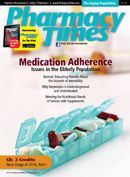Generic News
Health Reform’s Drug Discounts for Seniors Begin
Seniors will get a break on drug prices in 2011, as the Centers for Medicare & Medicaid Services launches a discount program designed to help close the Medicare coverage gap.
The discounts—50% on brand name drugs and 7% on generic drugs—took effect January 1, 2011, as part of the Patient Protection and Affordable Care Act. Although the discount for generic drugs is small by comparison, it’s just the first of several incremental discounts that will close the gap within 10 years.
In 2020, seniors who reach the gap can expect to pay 25% of the cost of both brand and generic drugs. Only out-of-pocket costs will go toward getting patients out of the gap and into “catastrophic coverage,” which kicks in when patients reach the out-ofpocket spending limit of $4550.
The provisions are expected to improve medication adherence, as many patients neglect to fill prescriptions once they reach the coverage gap. The National Council on Aging estimates that 4 million seniors will face the gap in 2011, and that the discounts could add up to as much as $1800 in savings for some individuals.
Despite Hurdles, Generics Show Record Growth
Dramatic growth in the use of generic medicines has yielded “substantial savings” for US consumers, according to a government brief released last month. The report predicts even greater savings as patents expire— but only if certain critical barriers are addressed.
“Maintaining or improving the generic prescribing rate is an important tool in efforts to control health care costs,” wrote the staff of the Office of the Assistant Secretary for Planning and Evaluation (ASPE) in “Expanding the Use of Generic Drugs.”
Obstacles that could impede the expansion of generic drug use include state laws governing generic substitution by pharmacists, factors related to the availability of generics, and perceptions of patients and prescribers regarding generic drugs.
The ASPE brief expressed a contested view of pay-for-delay patent settlements, which it says “delay generic competition and the availability of generics.” According to estimates by the Federal Trade Commission (FTC), these patent settlements cost American consumers $3.5 billion per year.
A statement by the Generic Pharmaceutical Association (GPhA) took ASPE to task for its reliance on FTC figures, however. “ASPE failed to do any independent analysis or evaluation of the FTC’s claim, which has been criticized by several economists as seriously flawed,” GPhA said.
The 2 groups agreed on one matter— that an approval pathway for biosimilar products could save the health care system billions. By creating an abbreviated approval pathway for biosimilar biologic drugs, the federal government would save between $9 billion and $12 billion over 10 years, primarily through Medicare.
Despite these hurdles, the outlook for generic drug dispensing is promising— so promising that estimates of savings are “fast moving target,” the report concluded. “There is a clear consensus that generic savings are now a large and important source of health care savings,” ASPE stated.
FDA Spotlights Generic Approvals of 2010
The FDA released its semiannual “Generic Drug Roundup” in December. The consumer-oriented report provides an overview of approval dates, availability, and indications for newly launched generics, as well as basic facts about the safety, cost, and reliability of generic drugs.
Among the generics featured were anastrozole tablets, a breast cancer drug originally marketed under the brand name Arimidex by AstraZeneca. Launched in June, the generic is expected to impact sales of its brand counterpart, which totaled $916 million in 2010, according to IMS Health. The report also highlighted losartan potassium tablets—a generic version of Merck’s hypertension drug Cozaar— as well as the antibiotic aztreonam (for injection), equivalent to Bristol-Myers Squibb’s Azactam.
Enoxaparin sodium injection, the first generic version of sanofi-aventis’ Lovenox, also earned a mention for its high-profile launch. Marketed by Sandoz, this low—molecular weight heparin is indicated for multiple uses, including the treatment of deep vein thrombosis. Sales of Lovenox totaled $4.57 billion in 2009, according to IMS Health.
The report also noted the approval of venlafaxine hydrochloride extended- release capsules, a generic alternative to Wyeth’s antidepressant Effexor XR. To view the full FDA report, visit http://phrmcyt.ms/gASNyp. PT

